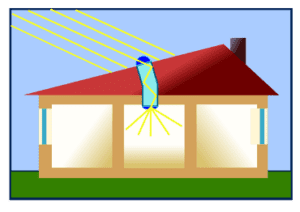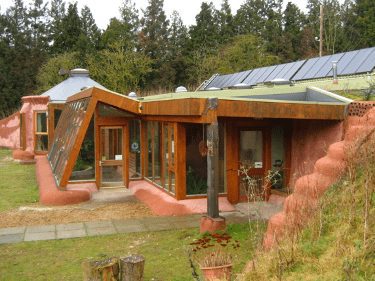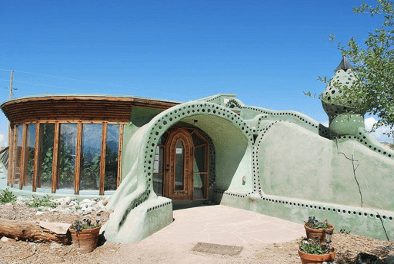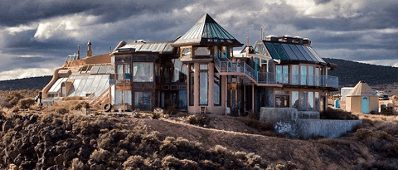Building Your Own
Earthship Construction
To build a fully functioning earthship can be inexpensive, because you can create one from inexpensive, repurposed, or recycled materials.
Earthships moderate interior conditions like expensive zero-energy homes do (which we’ll discuss more in a future lesson on home heating) but cost a fraction the amount.
Earthships are labor-intensive to construct, so if you aren’t going to build it yourself (with help from friends and family maybe), your main construction costs will be labor.
Materials suitable for use in underground homes and earthships:
- Old car tires ram-packed with soil; clay is also very good (used for the structure and thermal mass);
- Concrete and plastic where needed—not wood (unless for windows or doors);
- Reclaimed brick;
- Clay;
- Rocks and stones;
- Reclaimed windows, doors, etc.;
- Instead of earth-packed tires you could substitute stone, earth bags, concrete or adobe, or whatever other materials are readily available to you.
Basic designs usually come is a crescent to allow maximum solar exposure shape (and because it’s hard to build corners with car tires). If you live in the tropics or other hot regions, you can use an easier dome design, as heat gain isn’t a requirement.
Strength of walls in all underground housing is of paramount importance. These walls need to support the weight of the soil around them. A dome shape allows tremendous weight-bearing capacity in a structure; circles or octagons are also strong shapes for construction.
Underground And Bermed
If your house is truly underground (not bermed with windows on the side) you will need to allow in some light…
Skylights are difficult to install, often create problems. They are a leak liability, they cause considerable heat loss in winter while radiating heat in summer, the lack of privacy could be a concern depending on your location (unless you use opaque glass), and, ultimately, they are of little use in lighting the interior of your home. As sunlight is only able to penetrate the interior of the house when the sun is directly above the house, skylights are only useful for maybe an hour a day when the weather is good.
The solution has no commonly accepted name, known variously as a sun tube, sun tunnel, light tube, tubular skylight, a solar tube… Basically, these are long tubes with glass tops on the outside where solar rays enter and are sent down the tube, covered in reflective material or highly polished to act like a mirror on the inside, the light then diffused throughout the house. The top (on the roof) is clear, and the lens at the bottom (in your ceiling) refracts the light around the room below.
Because the skylight is long and narrow, light wouldn’t make it to the room below without the reflective materials within the tube, bouncing the light back and forth until it reaches the lens. See illustration below:
 When you finish constructing your underground house you will have exposed earth on the wall berms or on the roof. To avoid wind and water erosion, plant these surfaces with grasses of small shrubs that don’t have tap roots, solving any potential erosion problems.
When you finish constructing your underground house you will have exposed earth on the wall berms or on the roof. To avoid wind and water erosion, plant these surfaces with grasses of small shrubs that don’t have tap roots, solving any potential erosion problems.
Condensation build up can cause mold growth in underground houses. To prevent this you must:
- Ventilate correctly: See the diagrams above for passive ventilation or install low-powered vent pumps.
- Install a vapor barrier: During construction, insulate walls on the outside and put a vapor barrier under the insulation on the outside of the wall. This prevents the heat differential that can cause condensation on the walls on the inside of the house.
The easiest place to construct an earth-sheltered house is on the side of a hill. It’s easy for a machine operator to cut a foundation site there, and once the home is constructed, it’s already completely covered—you don’t need to move earth to cover it. Ensure the berms slope away from the house.
In the Northern Hemisphere, underground houses should face south (and north in the Southern Hemisphere).



